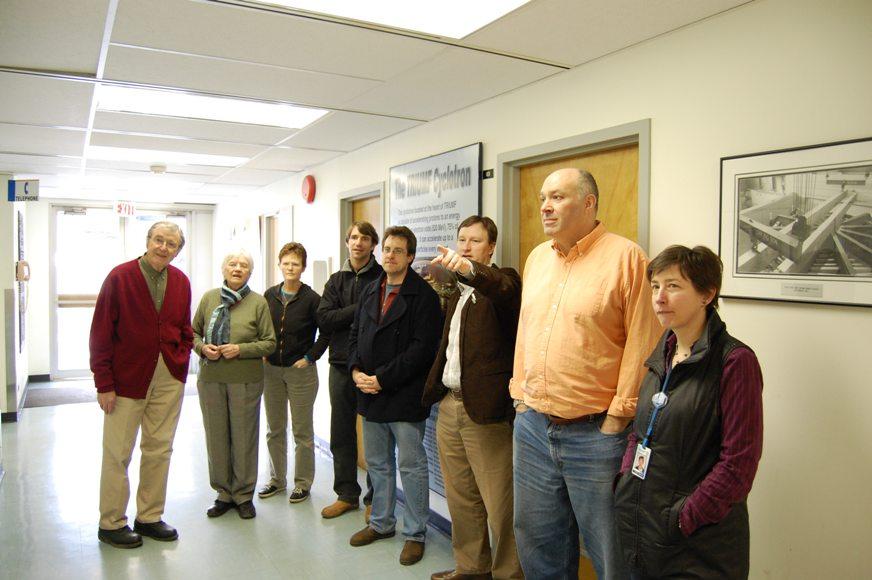The year 2011 is the International Year of Chemistry. What does that mean? It means it is a year of reflection, of understanding, and of recognition of how much "the central science" plays a role in our daily lives. Most people think of TRIUMF as a physics-research laboratory but in reality, much of the work concerns chemistry or depends on chemistry.
To bear witness to this aspect of TRIUMF as well as to see some of the not-always accessible parts of the lab, a group of Simon Fraser University chemistry professors and senior administrators visited TRIUMF a few weeks ago on March 29, 2011. The visitors included chemists who use TRIUMF's beams of rare isotopes to study structure of materials and nuclei and chemists who work with medical isotopes produced at TRIUMF.
Since the 1970s, there has been a close connection SFU's chemisry department and TRIUMF. For instance, the ISAC production targets are managed by Dr. Mark Dombsky, a SFU chemistry Ph.D. Likewise, cyclotron operator David Prevost graduated from SFU with a minor in nuclear science. As Professor Corina Andreoiu says, "The nuclear-science minor is unique in BC and is an asset to the region and to TRIUMF." Other nuclear-science graduate studnets at SFU conduct research at TRIUMF using rare-isotope beams with 8pi and TIGRESS. Others use medical isotopes at TRIUMF such as Co-55 for their research. "The interdisciplinarity of TRIUMF is truly a strength," Professor Andreoiu added.
 |
| Visitors (including Corina Andreoiu, Tim Storr, Vance Williams, Andy Bennett, and Theresa Kitos) learning about the main cyclotron before heading downstairs to the man vault. |
It was a special visit. Because the lab is completing its winter maintenance period, the group had the chance to visits parts of TRIUMF that are not usually accessible. The visitors trekked down to see TRIUMF's main cyclotron "up close and personal" under the guidance of Jamie Cessford. Descending into the vault surrounding the main cyclotron, the visitors got a first-hand look at the interior of the cyclotron. During maintenance cycles, the top "lid" of the cyclotron is lifted on a number of powerful jacks, exposing the interior of the vacuum vessel to human-sized repairs and technicians.
The group also visited the ISAC target hall under the guidance of guru Grant Minor. They saw the new North Hot Cell roof and observed the different stations for handling of targets used during isotope production. Because of instantaneous radiation and short-lived radioactivity, the targets used to produce exotic isotopes for science must be handled by remote-controls and even robotic arms. The visitors witnessed the staging areas where targets are inserted into modules which provide electrical, cooling, and diagnostic services. During operation, the target modules are inserted into shielded target modules which contain any scattered radiation.
After the tour, Dr. Andreoiu said, "Everybody got very excited about this tour, thank you for sharing it with us." And a special thank you to Jamie, Grant, Chad, Angus, and the others who made this visit possible!
--by T.I. Meyer, Head of Strategic Planning & Communications
